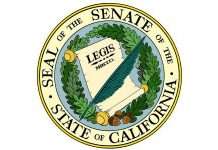The California Chamber of Commerce and a coalition of employer groups say more analysis is needed before the state proceeds with developing a retirement savings program for private sector employees whose employers don’t currently offer a plan.
Completion of a feasibility study and market analysis was one of the requirements when legislation authorizing the California Secure Choice Retirement Savings Program was enacted in 2012 (SB 1234; Chapter 734).
The completed study/analysis inadequately answers or fails to address basic concerns that the CalChamber and employer groups have expressed, the coalition writes in a March 10 letter to the California Secure Choice Investment Board, chaired by California State Treasurer John Chiang.
The coalition finds that the report oversimplifies the processes and procedures that employers will be required to complete, makes assumptions that may or may not materialize regarding the recordkeeper function under the direct service model, and fails to adequately and completely identify and address risks and liabilities for employers.
The coalition also notes that “simple, cost effective private market solutions may be available and yet have not been explored.”
Program Criteria
The Secure Choice program must be easy for employees and employers to understand, easy to implement and easy to comply with, the coalition writes.
According to the legislation, employers must not be exposed to risks for employee assets or investment choices, and must not face traps that could cause inadvertent liability.
Federal Law Impact
A primary concern of employers before SB 1234 was enacted was how the federal Employee Retirement Income Security Act of 1974 (ERISA) applied to the plan and employers.
The bill therefore explicitly acknowledges these risks and was amended to state that the board shall not implement the retirement savings program if:
• the Individual Retirement Account (IRA) arrangements fail to qualify for favorable federal tax treatment accorded to IRAs under the U.S. Internal Revenue Code;
• it is determined that the program is an employee benefit plan under ERISA;
• the program creates liability for the state or for employers.
Coalition Concerns
• ERISA Applicability: The CalChamber and coalition voice concern about the report’s inadequate attention to ERISA and the program’s compliance with U.S. Department of Labor (DOL) regulations.
The question of whether the program is subject to ERISA is unsettled and the DOL admits the ultimate determination rests with the courts, even though it has proposed a draft regulation “to reduce the risk of state programs being pre-empted.”
• Employer Outreach and Education: Key to the success of the program is the full participation by eligible employers, which will require extensive outreach and education in advance of implementation.
This program component is not given adequate attention in the report, while employee outreach and employee protections are given significant weight.
• Employee Outreach: The report recommends a concerted, aggressive public education campaign focused on workers and small businesses. The coalition agrees this outreach and education of employees is very important.
Given the lack of investment sophistication of the program’s targeted population as identified by the study, employees must have easily understandable and readily accessible information that covers all aspects of the program, including the fundamentals of process, procedure and investment risk and reward.
Key recommendations of the report omit (or downplay) the key financial education that employees will require, and instead focus on granting employees with enforcement and compliance powers targeted at the employer. The report also severely underrates the understanding of eligibility and the selection of the appropriate investment vehicle by participants.
• Rules and Procedures: The rules and procedures recommendations fail to acknowledge and address the complexities of the employer duties, responsibilities, and risks. Furthermore, the report fails to specify what the employer’s “ministerial duties” are limited to, leaving employers at risk of ERISA pre-emption.
• Enforcement Against Employers: The coalition has serious concerns regarding the enforcement component. This provision has not been made clear enough.
A primary concern for California employers is that additional enforcement functions for the state Department of Industrial Relations will require an increase in assessments on employers since the department is supported by a fee on employers.
• Recordkeeper Concerns: The coalition prefers an operational model that provides as much separation as possible between the employer and the participation and investment decisions of the employee, and that limits the employer’s role to distributing program marketing materials to employees and processing their payroll contributions. Aspects of the recordkeeper role also have potentially significant implications related to privacy and the Patriot Act.
Throughout the report, the recordkeeper is assumed or hoped to be capable of a variety of operations: managing day-to-day operations of the plan (including maintaining individual accounts); keeping track of transactions and assets at the individual participant account level; enrolling participants; tracking participant contribution rates and investment selections; providing account statements; maintaining the plan website; and providing general support to participants and plan sponsors/employers.
The report further recommends the direct service model with a recordkeeper and that the program hire a consultant to draft the request for proposal (RFP), run the RFP process and oversee implementation of the operational model. The coalition asks how these expenses been accounted for in the start-up costs.
• Risk and Liability: Not part of the report is an analysis of any risks to the program and their potential consequences, and how to minimize or prevent them. Many questions remain unanswered regarding potential risks and threats, and how potential problems could be addressed.
Examples of unanswered questions listed by the coalition letter range from who is responsible for lost income by the participant if a contribution is lost or late, to who is responsible for any shortfall if the program is not self sustaining as anticipated.
• Cost to Employers: In contrast to the simplistic model in the report, the coalition has identified many decision and tracking points for employers, all of which not only create cost, but also potential liability for mistakes and lawsuits.
The coalition is concerned that the many moving parts of tracking and remitting payroll contributions could result in mistakes, and that those mistakes could wind up being costly for employers in terms of enforcement penalties, and could potentially result in exposure to legal liabilities.
The coalition urges the board not to assume that the employer cost of compliance is absorbable.
Upcoming Meeting
The Secure Choice Investment Board will convene on March 28 in Sacramento to hear staff recommendations based on the report and the public written comments, and then to vote on their adoption. The public will be able to comment during the hearing as well.
The result of the board’s recommendations for the program will be forwarded to the Legislature for further action. This year, Senate President Pro Tem Kevin de León (D-Los Angeles) has introduced SB 1234 as placeholder legislation to implement the program.
Staff Contact: Marti Fisher


